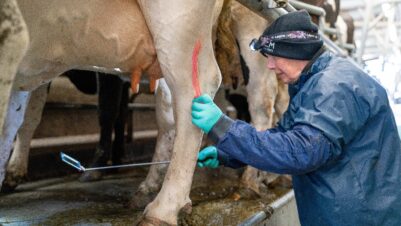WITH INCREASING FINANCIAL CONSTRAINTS and demands on the farming industry, historical attempts to reduce parasitic burdens have seen an increasing reliance on anthelmintics. These pressures, coupled with the intensification of farming, mean that maximising returns from farm to fork has never been so imperative.
But increasing reliance on anthelmintics has also led to the development of resistance. There is already Group 1 (BZ) resistance widespread on sheep farms, with Group 2 (LEV) and Group 3 (MLs) following. This is primarily due to over-usage of flock anthelmintic treatments, which has been very costly to the sheep industry. Flukicide resistance needs to be addressed – and comprehensive measures put in place – to prevent it following suit.
Fasciola hepatica, or liver fluke, is now considered to be endemic in certain areas of the UK, especially in the wetter regions, such as Wales and northwest England.1 However, there have been widespread reports of fluke infestation. F. hepatica is influenced by climate, with wetter summers and milder winters producing an increased risk year on year due to an increase in survival of the intermediate host, Galba truncatula (mud snail).
The adult snail can produce 100,000 eggs in just three to four months.2 The trematode can multiply up to 500 times within one adult, potentially resulting in an explosive multiplication of fluke. This has led to a rise in reported cases over the last 10 years. Other contributing factors which must not be forgotten include increased livestock movement, intensification of farming, and exponential reports of triclabendazole resistance.
It is commonly known within the farming industry that triclabendazole resistance is on the rise; therefore, many experts advise restrictions on its use in cattle, in order to preserve its efficacy in sheep, where it is most needed to treat acute fluke disease.3 In cattle, the most common manifestation of disease is chronic liver disease, which is caused by the adult stages of liver fluke. To combat this, it is advisable to involve rotation of flukicide actives in strategic anthelmintic herd health plans, prior to the correct risk period.
Incorrect quarantine anthelmintic treatments can pose a risk, especially in bought-in stock that can bring with them triclabendazole-resistant fluke. COWS (Control of Worms Sustainably) recommends avoiding triclabendazole for quarantine, but caution must be taken as other products will not kill early immature fluke, and therefore a second treatment will be required to remove residual fluke.
SCOPS (Sustainable Control of Parasites in Sheep) advises that treatment with more than one product with active molecules against immature flukes (closantel, nitroxynil, triclabendazole) will reduce the risk of introducing fluke with resistance to any one product.
References
- AHDB Beef & Lamb. [online] http:// beefandlamb.ahdb.org.uk/returns/ [accessed: 03/09/2016].
- SCOPS Sustainable Worm Control Strategies for Sheep, 3rd Edition, 2009.
- Balsom, A. (2010) Farmers urged to limit use of triclabendazole for treating liver fluke. Farmers Weekly [online] http://www. fwi.co.uk/livestock/farmers-urged-to-limituse- of-triclabendazole-for-treating-liverfluke. htm [accessed 4th May 2017].










